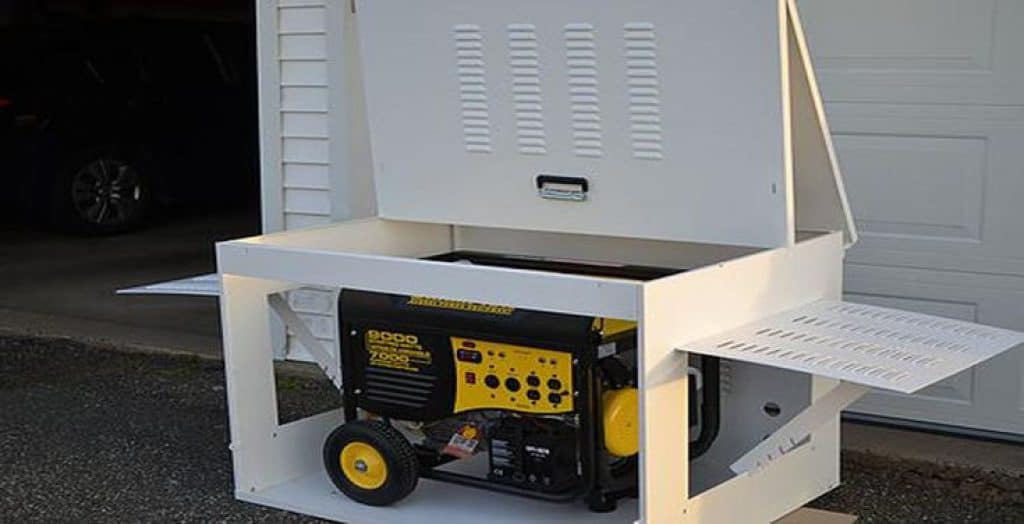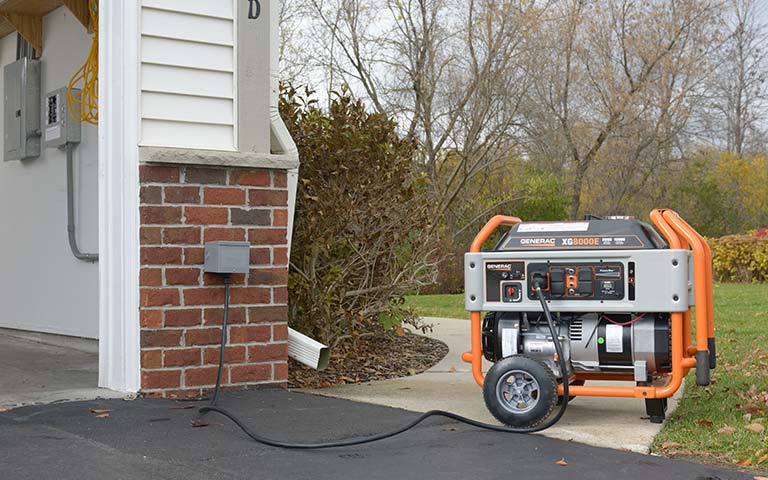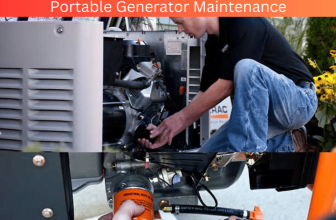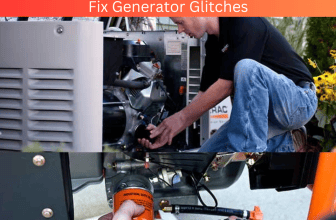Common Common Portable Generator Hurdles & How To Overcome Them

The convenience of owning a portable generator cannot be overstated – from ensuring uninterrupted power supply during emergencies to enhancing outdoor experiences by providing electricity on-the-go. However, as useful as they may be using these machines often comes with unique hurdles that could dampen their benefits.
If you’re looking for solutions to these common hurdles hindering your use of a portable generator look no further! In this article, I’ll provide expert tips on how to tackle the most typical hurdles associated with owning and utilizing a portable generator effectively so that you can continue enjoying its many advantages.
Choosing The Right Generator
Selecting the best generator for your needs can initially seem like a daunting feat. However, with careful consideration of the available options and your specific requirements in mind this task can become significantly less intimidating.
A major point of consideration when it comes to choosing a generator is its power output – which can vary greatly depending on the particular model you select. For those who only require basic appliance power like lights and fans a conventional portable generator with wattage outputs between 1000 and 2000 watts should be sufficient. But if you need to power larger tools or appliances such as refrigerators or air conditioners then look for generators with higher wattage output – usually ranging between 4000 and 4500 watts.
In addition to wattage output, other elements that should influence your decision include noise levels and portability. Some generators are explicitly designed for silent operation while others may come equipped with louder engines but extra features. If you frequently need to move your generator around from place to place consider purchasing one with built in wheel kits or other convenient transport methods.
Regardless of what type of generator you are looking for; safety must always be a top priority during purchases. So before committing financially on any specific brand/model, ascertain that it has all the requisite safety features available beforehand- like automatic shutdowns due to either low oil levels or overloading- so as not to jeopardize not only yourself but also any accompanying equipment.
After taking stock of these vital considerations on safe use features present in different models – spend time selecting one that matches your financial abilities as well as meets specific personal needs for maximum benefits. Once acquired, your newly purchased portable generator will guarantee on-demand electricity whenever and wherever required, keeping you always prepared for any unexpected power outages.

Storing Your Generator Safely
Your generators longevity and optimal functionality depend on proper storage protocols. A crucial step towards achieving this is thoroughly reading the manufacturers instruction manual to ascertain fuel type required oil level, and maintenance recommendations ideal for your machine before storing it away. Ensure that you switch off all power sources completely before putting away your generator to avoid potential safety hazards that may emerge from poorly maintained machines or broken components during usage.

Additionally finding a cool and dry location free of moisture is essential as damp environments lead to rusting and corrosion resulting in starting difficulties or damage to internal parts of the motor. When living in areas with heavy rainfall or snowfall, consider investing in a weather resistant cover specifically designed for protecting generators against external elements.
Finally, before an extended period of non usage always check oil levels periodically as inadequate lubrication can lead to severe engine damage or even complete motor failure if ignored for long periods. Maintaining and maximizing the lifespan of your portable generator requires a few practical steps that are well worth taking. Follow these guidelines for safe storage and preparation before use to guarantee years of optimal performance.
With safety as a top priority lets begin by discussing how to store your generator properly.
Preparing Your Generator For Use
You don’t need an advanced degree in engineering to use your generator effectively! These simple steps will get you up and running in no time. First things first, take some time to read through and understand your owners manual so you can safely operate your equipment with confidence. Once you feel comfortable with this step, double check all connections. They should be secure as well as making sure you have enough fuel for operation without interruption! Finally, give any necessary safety features (such as circuit breakers) a test run before proceeding any further into using your generator at full capacity.
Understanding Generator Wattage
Now that your generator is ready to go lets talk about wattage – a critical factor in selecting the right machine for your needs without overloading it. With proper understanding of wattage, you can also determine ideal fuel type and tank size for peak efficiency when using your generator. Wattage refers to how much energy a generator can generate at maximum capacity. Therefore, calculating total running watts of all equipment planned for operations is crucial during selection process – ensuring its combined total does not exceed rated capacity of chosen device.
Also consider starting wattage if some equipment requires additional power when turned on. To ensure perfect match between portable generators and specific electrical needs consult an expert or use online calculators before installing it correctly – then get ready for safe and efficient usage.

Installing The Generator Correctly
Correctly installing your generator is essential not only for its overall efficiency but also for ensuring safety during operation. While it may seem overwhelming initially, several tips have proven helpful in making this task more manageable.
Begin by reading all instructions carefully before starting installation processes thoroughly. Skipping steps or rushing can lead to hazardous errors or malfunctions that undermine both safety and performance levels.
Moreover, following manufacturer recommendations regarding safety precautions and appropriate maintenance measures ensures optimum effectiveness of your generator’s operation. This involves placing the equipment away from wet areas and inflammable materials like gas cans while grounding it correctly according to local codes.
If you encounter any doubts about how best to install your generator during the process, contact qualified electricians/technicians with experience handling generators for assistance promptly.
Once installed successfully, relax as knowing reliable backup power solutions that run safely when required most are available at all times- now focusing on regular generator maintenance to ensure efficient performance and longevity.

Maintaining Your Generator Regularly
Don’t let poorly maintained equipment catch you off guard during critical moments! With just a little bit of effort on your part, you can reduce your risk of generator failure significantly over time. Consistent upkeep is key. Start by scheduling routine changes of both oil and air filters to maintain optimal engine function.
Additionally, checking your fuel tank every so often for any debris accumulation will also go a long way in preventing clogged lines down the line (pun intended). Always keep an eye on battery life as well, anything short-lived could signal an impending replacement requirement sooner than later.
Examination of connectors/wires for corrosion should also be carried out regularly since this can impact proper spark timing upon startup . Lastly, conduct frequent assessments of any belts or hoses towards assessing their durability for replacement purposes down the line. Following these simple steps conscientiously will ensure peak performance from your generator with minimal disruptions in times where reliable backup power supply is critical.
Keeping your generator in top shape requires more than just routine maintenance – refueling is crucial too. To optimize performance and keep your portable generator running strong always make sure to use the recommended amount and grade of fuel.
Refueling Your Generator Properly
Refueling your portable generator can be a bit tricky since it requires specialized steps different from those used when refilling a cars gas tank. Nevertheless keeping your machine fueled up is critical for its sustained performance and I’m here to walk you through proper generator refueling techniques.
Firstly, always remember never to add fuel while your engine is still running since spilled fuel can lead to fires.
Thus, ensure that you switch off your engine before refilling your machine with more gasoline. Additionally, make sure that the area around your generator is free from combustible materials like leaves or twigs. Proper ventilation in this area also helps reduce fire hazards.
Now lets get into the nitty gritty of how best to add fuel. Remove the cap from the fuel tank and pour in gasoline slowly using a funnel if necessary. Moreover, leave some space at the top of your generators fuel tank for expansion as temperatures fluctuate. An inch gap is suitable for this purpose. Finally, after finishing refueling replace all caps securely and clean up any spilled gasoline with a rag or paper towel.
Armed with knowledge on how to effectively refuel your portable generator, we can now shift our focus towards resolving common complications that plague generators.
Troubleshooting Common Hurdles
One crucial aspect of operating your generator safely is ensuring it has fuel. However, despite this critical point, there may still be some everyday hurdles when using a generator that will need addressing.
So now let us discover how to identify and tackle the primary hurdles people encounter with their generators. Commencing with a two-column summary that outlines common generator difficulties juxtaposed with proposed resolutions:
| Problem | Solution |
|---|---|
| Generator doesn’t start | Check both fuel and oil levels; search for clogged air filter; scrutinize spark plug/ignition system |
| Generator runs but no power output | Verify AC circuit breakers are working correctly; examine wattage draw on all outlets; confirm voltage regulator settings |
| Excessive noise or vibration | Evaluate tightness of mounting bolts; inspect engine mounts for wear and tear; scrutinize fan blades for any damage |
The table showcases how straightforward most solutions are to these problems.
Nonetheless, if all these suggestions fail, it may be necessary to reach out to a professional technician experienced in handling portable generators. Let’s talk about safety protocols for running a portable generator – an imperative skill for anyone who uses these devices, from camping enthusiasts to homeowners experiencing power cuts. Ready to gain some insights? Here we go.
Learning Safety Tips
Generators can be extremely helpful tools on camping trips during renovations or during power outages but they do require special care in handling . It is imperative that you take every precaution necessary to ensure both you and those around you remain safe.
Before using a portable generator ensure that you read through all manufacturer instructions and familiarize yourself with how it works .
Misuse could lead to accidents resulting in severe hurdles like damage or even injuries . Additionally, keep the manual with easy reach for future reference – this will act as a ready reckoner should issues arise while operating it .
In order for a generators functionality is maintained over time frequent maintenance checks need to be carried out. Loose components pose serious harm so ensure all nuts,bolts etc are firmly secured prior its operation. Another key thing to remember when dealing with generators is not allowing children nor animals near them at any time while being used .
They could come into contact with electrical wiring that can cause hurdles like serious injury – even death if things go unnoticed! Children who ride bicycles near generators might get trapped inside if active whilst playing outside too!
Last but not least, make sure that your generator is placed within a well ventilated area ensuring enough fresh air flow available at all times. Carbon monoxide produced by burning fuels releases poisonous gases poses grave danger including death should there be no dissipation of such toxic gases.
By following these essential safety tips you’ll be able to use your portable generator without incident. Enjoy the power and convenience without any fears of potential mishaps! Ensure that your portable generator operates smoothly by following some precautions. Once you’ve got this down its time to think about accessorizing your generator for an even better experience.
Adding Accessories To Your Generator
After securing yourself a generator the subsequent course of action is fitting it with complementary accessories to optimize its functionality. Depending on whether you require additional energy for camping or powering up an RV several options are available for consideration.
To begin with, an extension cord is a vital accessory as it facilitates keeping your equipment safely away from other items that could cause damage during operation. Besides this acquiring some form of protective covering for your generator is also recommended since it helps prevent exposure to harsh elements which could lead to wear and tear over time.
For more demanding tasks like powering up large scale projects such as cabins or RVs using portable generators investing in transfer switches ensures secure connections between the equipment and electrical systems while maintaining power flow where required.
By embracing all these essential add-ons you can relax knowing that your generator has all thats needed to perform efficiently while delivering maximum safety regardless of what project you have lined up next.
Frequently Asked Questions
How Often Should I Refuel My Generator?
In order for your generator to function smoothly and consistently ensuring that it has sufficient fuel is essential. Depending on usage patterns you should aim to refuel your generator at least once every 20-25 hours of operation.
When you hear that telltale sound of slowing or sputtering from the engine chances are high that your fuel levels are running low and require attention.
To avoid any disruptions in power supply, be proactive about regularly inspecting the fuel tank and adding more gas when necessary.
What Type Of Generator Should I Buy For My Specific Needs?
Finding just the right kind of generator could potentially present itself as an overwhelming task considering it calls for meeting particular needs precisely. Do specifications such as being lightweight and handy suit the job at hand or does one require a heavy lifter?
Which is more suited – gasoline run generators or those fueled by propane/diesel? While selecting an ideal match between generators and their usage several important factors must come under scrutiny such as size considerations along with aspects like power output potential so that they are able to perform when put into use; noise levels because peaceful settings certainly come to mind; and ease of mobility for portability. It is also pertinent to keep the budget in sight before making a final purchase.
How Do I Know How Much Wattage My Generator Needs?
Determining the right amount of wattage needed for a suitable power supply from a generator can be somewhat tricky but paramount in ensuring optimal performance during use.
The first crucial step is preparing an extensive catalogue containing all devices and appliances requiring electrical backup from the generator in question and noting down their respective running wattages from their manual or label guide provided by manufacturers or suppliers.
Afterward, totaling up these recorded values will provide an approximate estimation of required total wattages (in watts) needed from a chosen standby or portable solution accordingly.
To avoid unforeseeable circumstances such as reduced performance, safety concerns and overall satisfaction, it’s advisable to invest in a generator with slightly more power capacity than calculated if uncertain about what size to acquire.
How Do I Safely Transport My Generator?
When transporting a generator from one place to another keeping safety at the forefront of our minds is critical. Ensuring all cords and plugs have been securely fastened before beginning our journey is essential for preventing accidents from occurring along the way.
Furthermore, taking extra care when moving generators via trailers – by verifying hitch security and checking brake functionality – can likewise help keep us out of harms way during transit. Make sure all tires are properly aired up as well as regularly checked for wear and tear prior to setting off on any journeys with a generator in tow to minimize risk even further. Lastly, don’t forget employing wheel chocks or straps during loading or unloading stages can provide an added layer of security.
How Do I Prevent My Generator From Overheating?
Perhaps one of the most common problems faced by owners of portable generators is dealing with its tendency to overheat rapidly.
To address this issue effectively without compromising on safety aspects prioritize keeping your device adequately ventilated throughout its usage duration while ensuring that it remains uncovered as well simultaneously. It goes without saying that frequently examining oil levels and intermittently using the generator is essential too.
With these precautionary measures in place you can breathe easy without having to worry about overheating dangers or unexpected servicing expenses.
Conclusion
Portable generators play an essential role in providing power during emergency situations or on the go activities – yet knowing how best to operate them poses its own challenges at times! Fortunately though – by educating yourself through proper research upfront – utilizing this valuable power source is much easier than imagined! Before purchasing any specific unit type or model; gather background info on the one suited for your unique situation (e.g., wattage needs, fuel type). Its also important to practice proper safety measures during use, including handling procedures, regular fueling and monitoring of heat levels.
By adhering to these guidelines you’ll be able to confidently harness your portable generator capabilities as needed!






